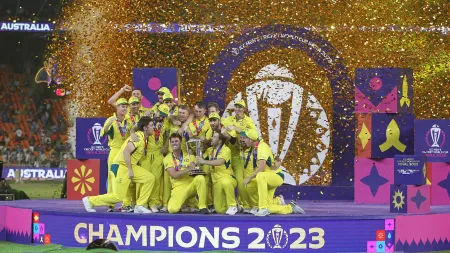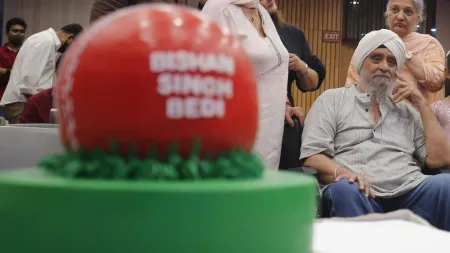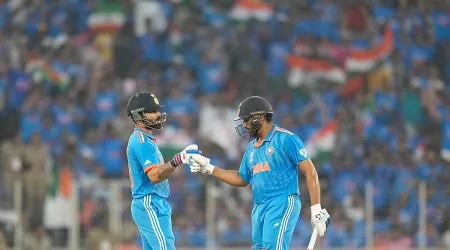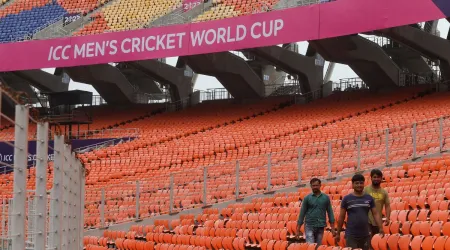- India
- International
Hardworking local coaches behind Manipur being hotbed of women’s football
State accounts for eight of the 23 players that make the Indian Asian Cup squad with Chaoba Devi grooming five of them
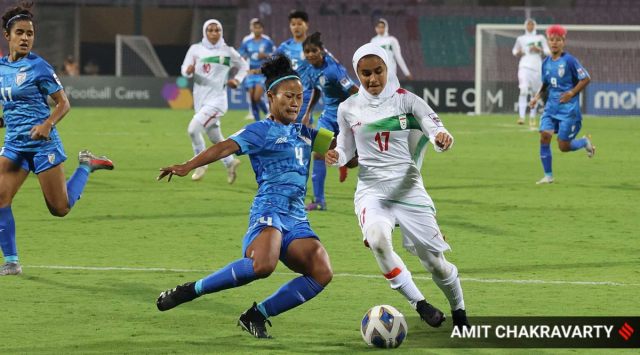 India captain Ashalata Devi is one of the eight players from Manipur in the Asian Cup squad. (Express Photo: Amit Chakravarty)
India captain Ashalata Devi is one of the eight players from Manipur in the Asian Cup squad. (Express Photo: Amit Chakravarty)
Chaoba Devi was visiting her maternal grandparents in Angtha, roughly 25km from Imphal, when she saw a puny girl playing with full energy with a bunch of other kids on a barren, uneven surface. There was something about her that immediately caught Chaoba’s attention. “Her discipline… and skill, of course,” she says.
Impulsively, Chaoba asked the girl, in her early teens, if she’d move to Imphal and join her community club, Kangchup Road Young Physical and Sports Association (KRYPSA FC). Almost as impulsively, the girl agreed and before they knew it, they were on a bus to Manipur’s capital.
This was in 2008. In the decade that followed, that teenager, Loitongbam Ashalata Devi, went on to become one of the most influential players in India. In 2019, she was named as one of the three nominees for Asia’s Player of the Year by the Asian Football Confederation (AFC). And on Thursday, she was the captain in India’s Asian Cup match against Iran in what was the team’s first appearance in the tournament after 19 years.
It was one of those ‘by chance’ encounters that coaches and scouts hope for. For Chaoba, this was one of the rare occasions in her decades of coaching. The rest of the time, the former India captain and assistant coach travelled from village to village across Manipur, spending hours on dusty fields in the hope of spotting a player who could become a star. In a state overflowing with talent, that shouldn’t be a tough task, one assumes.
Ashalata is one of the eight players from the north-eastern hotbed in India’s Asian Cup squad, accounting for almost one-third of the side. Chaoba says five of those players – Sweety Devi Ngangbam, Maibam Linthoingambi Devi, Nongmeithem Ratanbala Devi, Grace Dangmei and Ashalata – have been trained by her at some point in their formative years. It could have been nine had striker Bala Devi, arguably the best of the lot, not been ruled out by injury.

That Manipuri players dominate the squad is hardly surprising, given the deep-rooted football culture at a community level there. But a cursory glance at the team sheet gives some insight into the potential to grow the women’s game. More than half of the squad, 13 out of the 23 players, come from Manipur and Tamil Nadu. Five are from the Delhi-Haryana belt, two from Odisha and there’s one each from Punjab, West Bengal and Jharkhand.
Former India international Maymol Rocky, who has been associated with the junior and senior national teams in different roles over the last decade, says the scouting network is always on the lookout for players. “I can safely say that from the talent we’ve seen across the country in the last decade, 99 percent of the best players are in the team,” Rocky, who was India’s chief coach from 2017 to 2021, says. “The scouts keep an eye on all the matches at the national championships. And to be sure that no player is missed, we also do a state-wide exercise.”
Work at grassroots
The high number of players from Tamil Nadu, Rocky adds, is largely due to the work done by the state’s first all-girls football side, Sethu. The Madurai-based club opened its doors to women only in 2016 but in a short period, it’s been a runaway success at the national level, doing well in the women’s league and, simultaneously, unearthing players.
But while Sethu has been around for only five years, it’s the patient and relentless hard work by the coaches, and a functional structure that supports them, that’s made Manipur a conveyor belt for women footballers for decades.
For Chaoba, the first Indian woman to acquire an AFC ‘A’ licence, the transition to coaching happened very early in her career. “When I started playing in 1985, there was no coach to guide me,” she says. Like most women footballers, Chaoba, too, played with a boys’ team early on. “The senior players in the team taught me how to dribble, how to juggle, how to run, how to kick… I wasn’t taught anything formally. I didn’t want the generations of women players after me to face the same problem. So, whatever I learnt, I used to teach the younger players in our local club.”
At the turn of the century, soon after her playing career, Chaoba earned her coaching licence and immediately began traversing Manipur’s hilly terrain in search of players.
Suffice to say, her visits didn’t go to waste. This one time, Chaoba was at a School Games Federation of India championship where she came across an ‘extremely skillful forward’. That player, Ratanbala, is now one of India’s mainstays and plays as a holding midfielder.
At times, players’ families reach out to her, as it happened in the case of Dangmei, whose father – a pastor in a local church in Bishnupur village, travelled roughly 30km to Imphal, saw how Chaoba trained kids at her academy and then requested her to enroll his football-mad child.
And then sometimes, one just stumbles upon players who’d go on to become one of the finest of their generation. Like Ashalata.


















